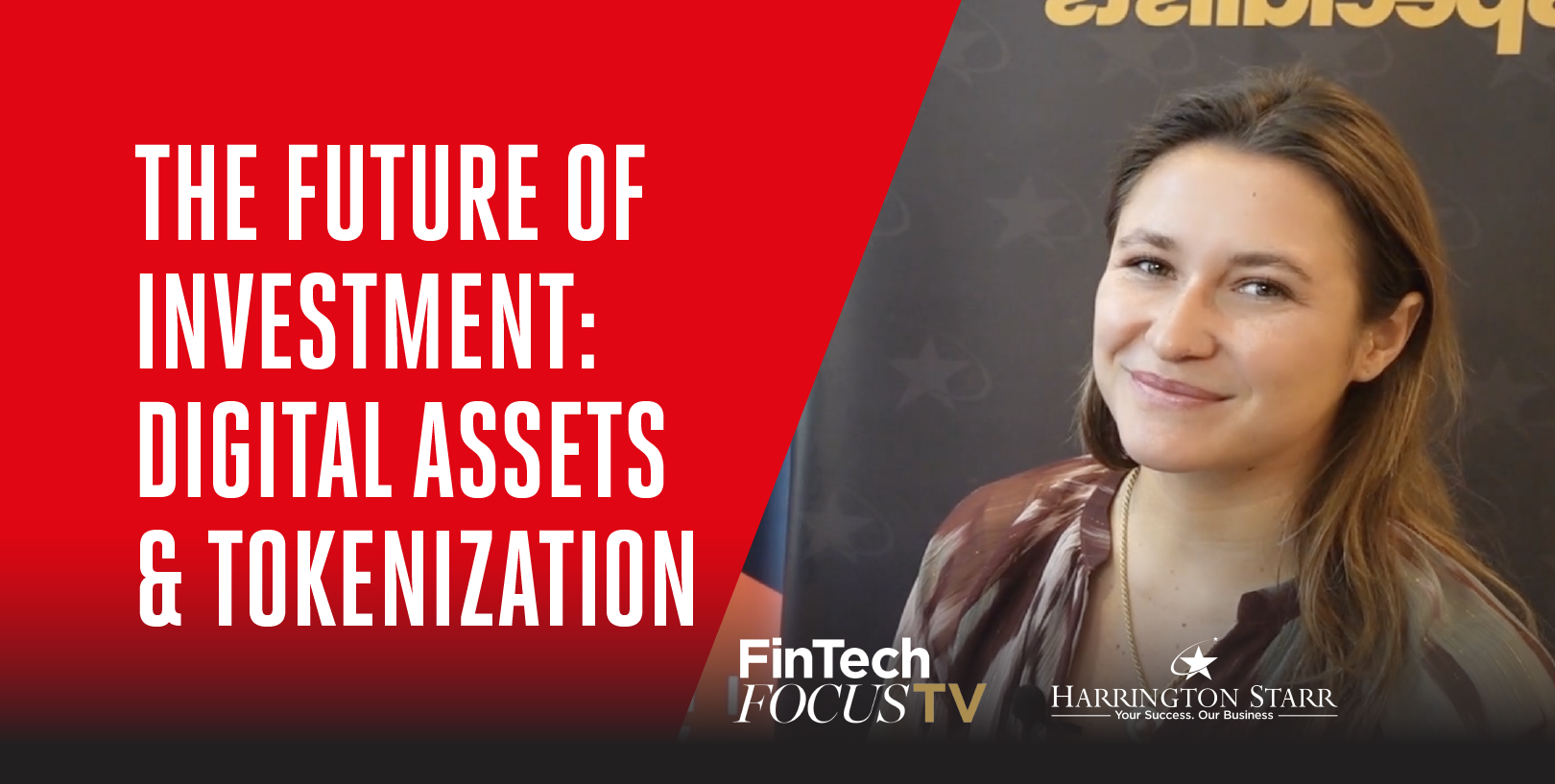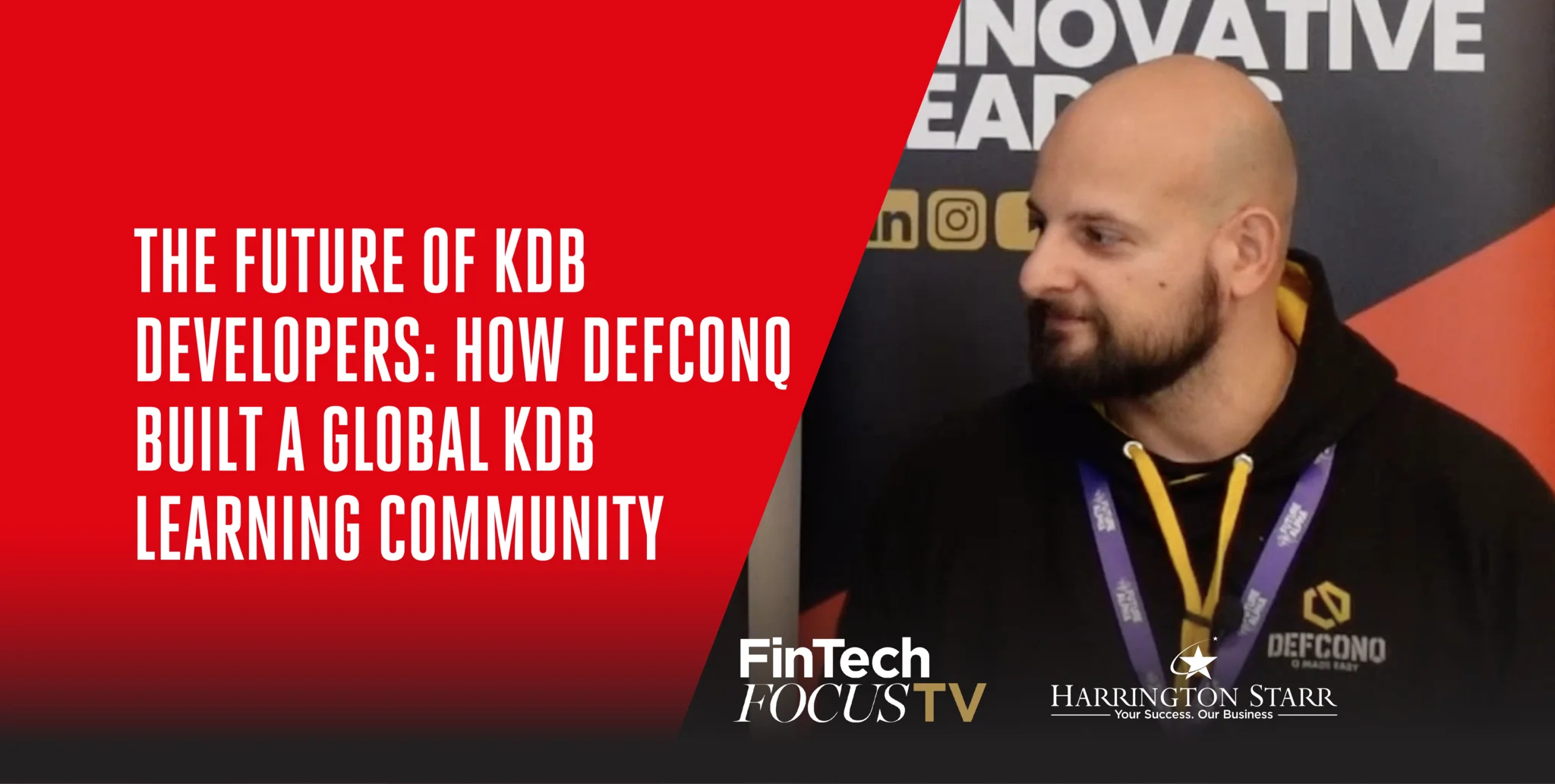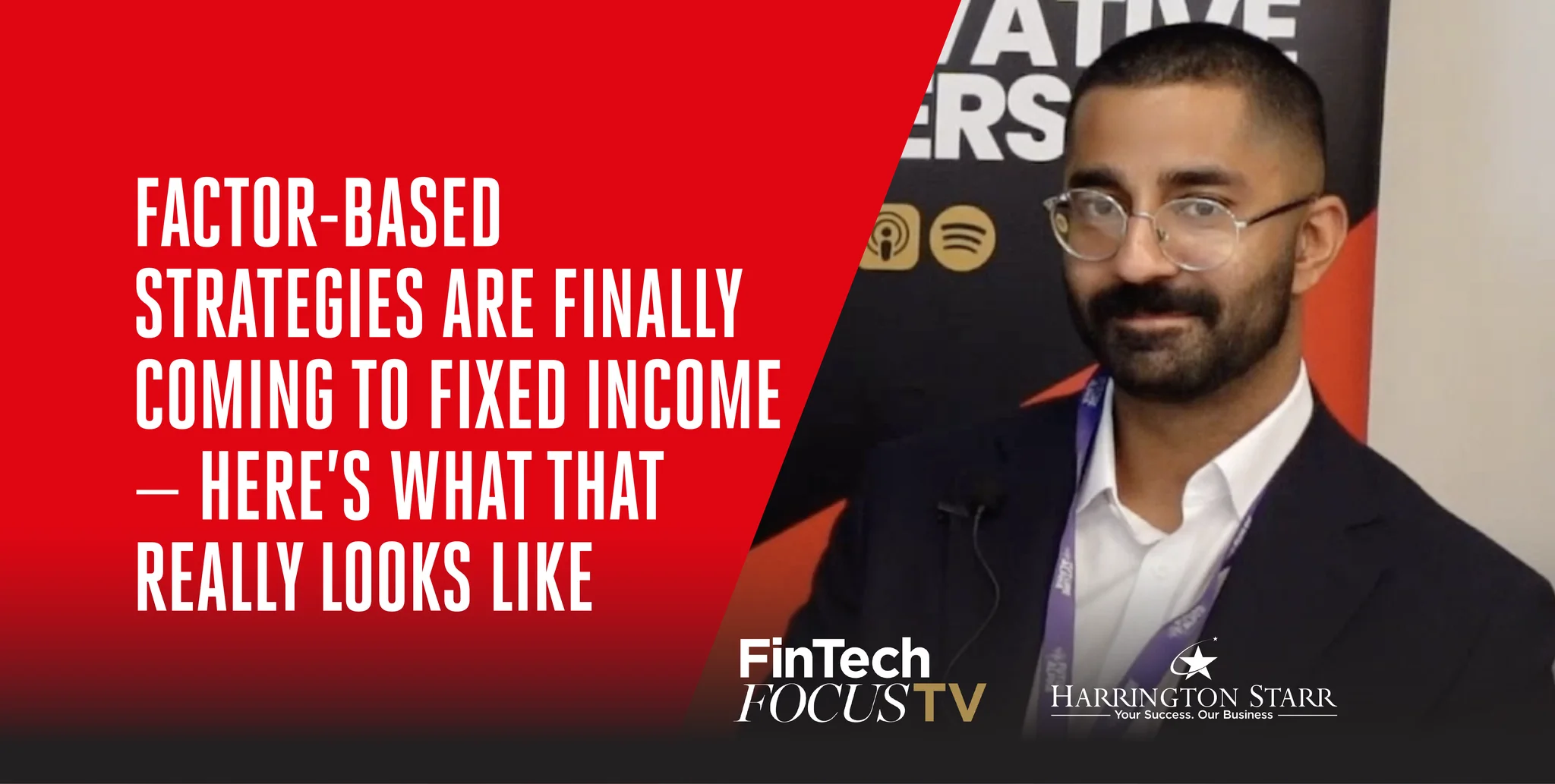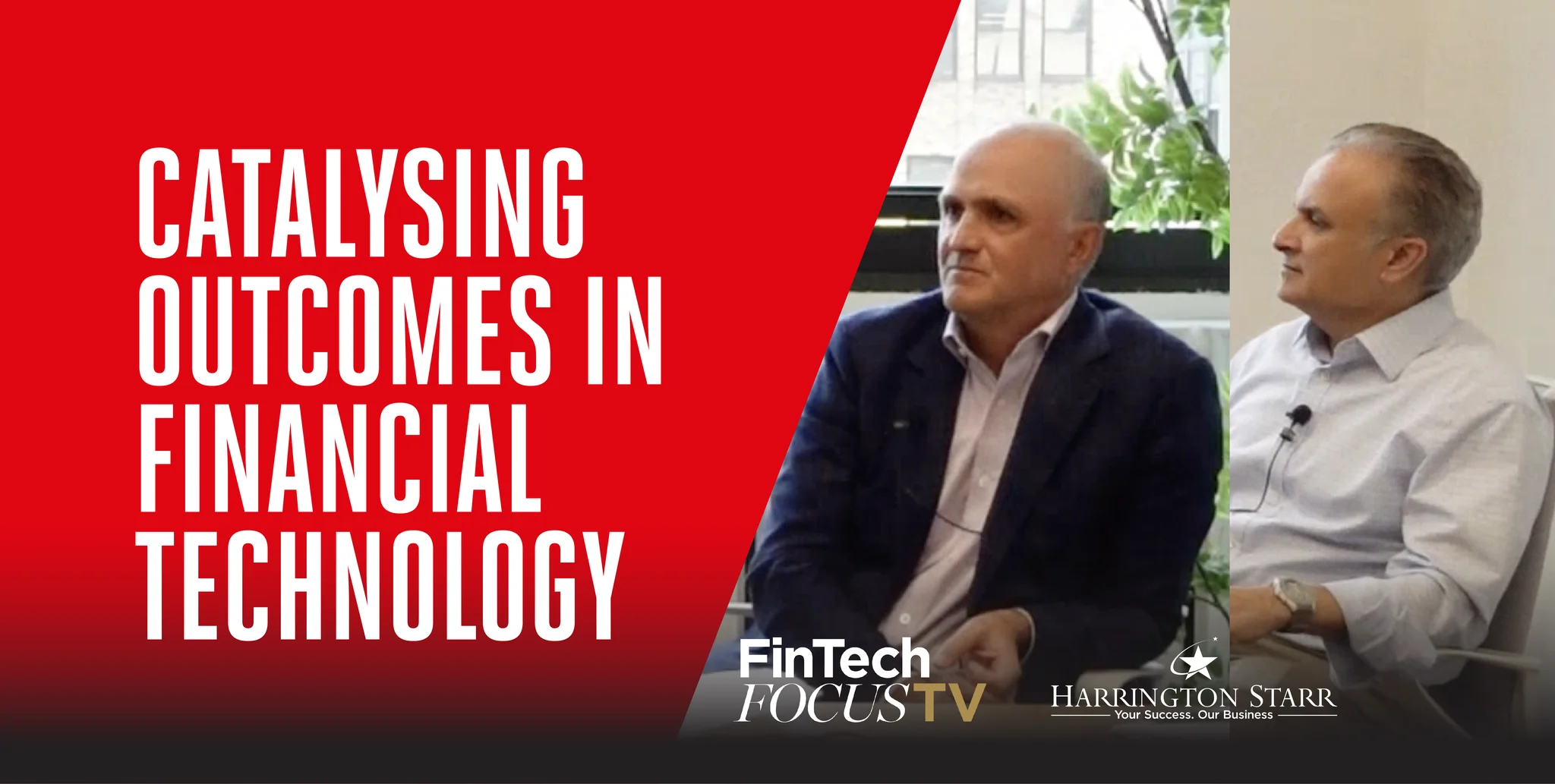Institutional Adoption, Interoperability, and the Future of Digital Assets
At the 2025 FIX EMEA Trading Conference in London, FinTech Focus TV host Toby Babb sat down with Madeleine Boys, Director of Programmes and Innovation at Global Digital Finance (GDF), to explore the rapidly evolving world of digital assets, the growing role of institutional participants, and the innovations driving convergence between traditional finance and digital finance.
This in-depth discussion reveals how far the financial services sector has come in embracing digital assets—and where it’s heading next. With a sharp focus on tokenisation, regulation, and interoperability, the episode provides a timely snapshot of the opportunities and challenges facing the FinTech industry in 2025.
For us at Harrington Starr—a leading FinTech recruitment business—this episode reflects a wider industry movement. Our clients are seeking the best talent to support digital asset strategies, while candidates are searching for career-defining opportunities in this space. This podcast highlights exactly why the time is now for digital asset transformation—and why the right people are key to making it happen.
Key Themes from the FIX EMEA Panel: Regulation as an Enabler
Madeleine begins the episode by reflecting on her recent panel at the FIX EMEA Trading Conference, which focused on tokenisation and digital assets. While tokenisation has long been a buzzword in FinTech circles, the conversation has matured. What once felt conceptual is now operational—and the market is taking notice.
One of the panel’s core themes was regulation, particularly the shift in narrative around its role in digital finance. Rather than acting as a barrier, regulation is increasingly being seen as an enabler. Madeleine points to developments such as the UK’s Digital Securities Sandbox and the European Union’s Pilot Regime. These regulatory initiatives are providing the clarity and support institutions need to explore digital asset opportunities without being constrained by legal uncertainty.
This transition is significant for the FinTech space. Regulatory frameworks are no longer abstract ideals—they are practical tools helping firms test and deploy real-world use cases. For a FinTech recruitment company like Harrington Starr, this evolution is reflected in the growing demand for professionals with regulatory expertise and experience navigating new digital compliance environments.
Building Bridges: Standardisation and Interoperability in Focus
As the discussion continues, Madeleine and Toby explore another critical enabler of digital asset growth: standardisation and interoperability. Madeleine outlines how the panel delved into the need for industry-wide standards to support digital asset development and lifecycle management.
She cites key examples of standardisation efforts from organisations such as ANNA (the Association of National Numbering Agencies), the DTI Foundation (which oversees Digital Token Identifiers), and the Global LEI Foundation (responsible for Legal Entity Identifiers). These entities are collaborating on what Madeleine calls a “trinity of standards” that span the asset level (ISINs), the token level (DTIs), and the entity level (LEIs).
This layered, integrated approach ensures that digital assets can be identified, tracked, and verified with the same rigour as traditional financial instruments. It’s an essential building block for institutional confidence and widespread adoption.
Madeleine also brings up the Common Domain Model (CDM), a machine-readable, executable standard developed by industry bodies to manage the automation and lifecycle of derivatives and other complex financial instruments. As digital asset trading grows more sophisticated, these sorts of executable models will be key to driving automation and reducing operational risk.
In the FinTech jobs market, these developments are shaping hiring trends. Firms are looking for professionals who not only understand traditional financial standards but can also implement and integrate them within digital frameworks. At Harrington Starr, we are actively placing candidates with this cross-functional expertise across our global client base.
A Landmark Collaboration: GDF and FIX Trading Community Join Forces
One of the standout moments of the episode is Madeleine’s explanation of a pilot project between GDF and the FIX Trading Community. Together, the organisations explored the interoperability of the FIX protocol—widely used in traditional finance—with digital asset infrastructure.
The result was the creation of the P2P Protocol Interoperability Alliance, which ran a pilot project demonstrating that firms already using FIX routers could integrate directly into digital asset systems using the P2P protocol. This collaboration didn’t require new infrastructure or complex overhauls. Instead, it showcased how existing systems could be enhanced to support the next generation of finance.
Madeleine describes this as a perfect example of the financial services industry leveraging existing standards to overcome the interoperability challenge. It shows how innovation can be achieved by building on familiar foundations—something that has major implications for businesses, clients, and FinTech recruiters alike.
For hiring managers, this means looking for candidates who can navigate both old and new systems. For job seekers, it’s a sign that understanding core protocols like FIX is still highly relevant—even in the age of tokenisation.
Inside GDF: Supporting Innovation Through Collaboration
Madeleine provides insight into the mission and structure of Global Digital Finance. As an industry association, GDF operates similarly to traditional finance associations such as ISDA or FIA. However, its focus is on the digital finance landscape, working with everyone from digital asset-native firms to global financial institutions.
GDF plays a dual role: advocating for best practices and regulatory clarity on one side, and leading collaborative, innovative programmes on the other. Madeleine, who heads the innovation arm, focuses on building initiatives that enable institutions and participants to trial, adopt, and scale digital asset solutions.
From consultations with policymakers to deep-tech pilots, GDF offers a platform where market stakeholders can convene and collaborate. The FIX P2P protocol pilot is just one example. It reflects GDF’s ethos of taking tangible action to accelerate adoption and promote harmonisation.
This collaborative spirit is something Harrington Starr recognises and supports. Our work in FinTech recruitment is similarly based on connections—bringing the right people into the right spaces to drive transformation. When organisations like GDF create environments for open innovation, the FinTech talent ecosystem responds.
Tokenised Money Market Funds: A Practical Use Case with Massive Potential
Looking to the future, Madeleine shares a use case that’s capturing the attention of financial institutions around the world: tokenised money market funds. These instruments, she explains, could be used as collateral for margin trading—a development that would mark a significant milestone for institutional engagement in digital finance.
Madeleine refers to data from the Bank for International Settlements indicating that collateral-based trading flows account for over $100 billion in global markets. By using tokenised money market funds as collateral, firms could potentially unlock up to $20 billion in cost savings.
This is not a theoretical ambition. Madeleine reveals that GDF is currently running a dedicated workstream to explore and validate this use case, including research and pilot programmes aimed at testing practical implementation. For institutions looking to build monetisation strategies around digital assets, this is a compelling entry point.
For Harrington Starr, this trend reinforces the importance of recruitment in emerging areas. As financial institutions explore tokenised collateral strategies, they need specialists who understand fund structuring, digital custody, blockchain integration, and smart contract deployment. Hiring for these roles is becoming a priority for many of our clients in the UK, Europe, and the US.
From Experimentation to Execution: Institutions Are Here
One of the most striking observations from Madeleine comes when Toby asks whether institutional adoption is finally happening. For years, industry conversations at conferences have circled around the same question: “Are the institutions here yet?” Madeleine’s response is unequivocal: “They are here now.”
She notes a clear shift from proof-of-concept to production. Institutions are no longer just exploring digital asset infrastructure—they are implementing it, building monetisation strategies, and scaling real-world use cases. This change, she believes, marks the beginning of a new era for finance.
This insight carries significant weight. Institutional commitment to digital finance was once a matter of speculation. Today, it’s a matter of action. And with it comes a fresh wave of opportunity for FinTech recruitment. The shift from exploration to execution means that firms need leaders, technologists, and strategists who can deliver results in a complex, regulated, and fast-paced environment.
At Harrington Starr, we are seeing firsthand how this momentum is translating into hiring demand. Financial services companies are building digital asset divisions, investing in innovation teams, and launching new product lines that require niche expertise. The institutions are here—and they’re hiring.
The Message is Clear—The Time Is Now
As the episode draws to a close, Toby invites Madeleine to share one core message that she hopes the audience will take away from their conversation. Her response perfectly encapsulates the theme of the episode: “The time is now.”
Madeleine elaborates by explaining that we are no longer in the early days of digital finance. Institutions are active, standards are being implemented, and monetisation strategies are becoming clearer and more robust. Importantly, the convergence between traditional finance and digital finance is no longer hypothetical. It’s already happening—and soon, the line between the two will be impossible to spot.
Toby agrees, highlighting that conversations about rebuilding trust in digital assets are giving way to discussions about execution, integration, and long-term value. This transition from ideology to implementation is what will define the next chapter of financial services.
For the FinTech community, this is a rallying call. The infrastructure is in place. The standards are emerging. The capital is committed. Now, it’s about bringing together the talent and leadership to drive it forward.
FinTech Recruitment and the Future of Digital Assets
As a FinTech recruitment business, Harrington Starr is at the intersection of innovation and execution. We work with clients and candidates across the UK, Europe, and North America to build teams that can deliver on the promise of digital finance.
This episode of FinTech Focus TV with Madeleine Boys highlights exactly why the sector is entering a new phase. Tokenisation, interoperability, regulatory clarity, and institutional readiness are converging to reshape global finance. And at the centre of this transformation are the people building the future.
Whether you are a business looking to scale your digital asset capabilities or a candidate ready to take your next step in FinTech, Harrington Starr is here to support your journey.






